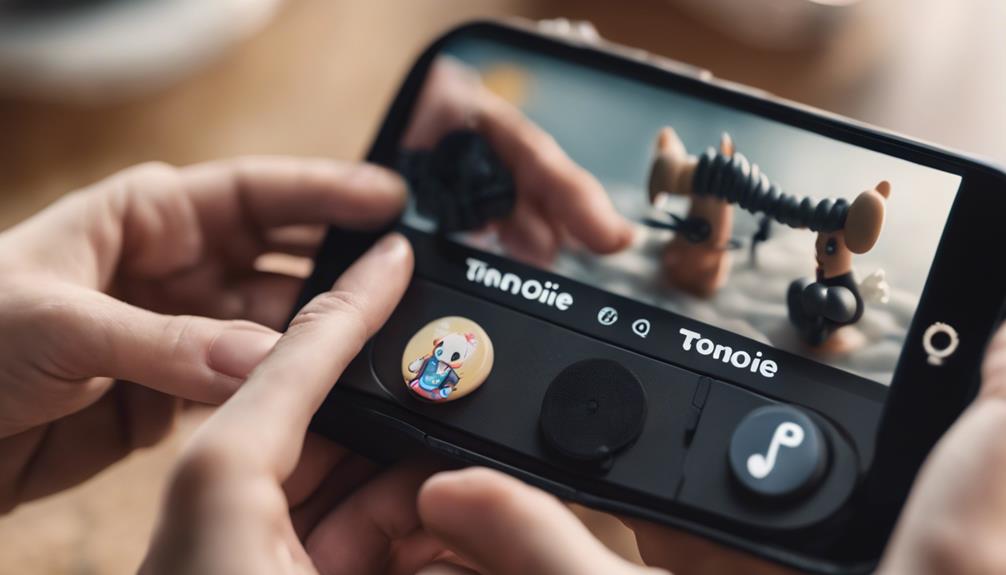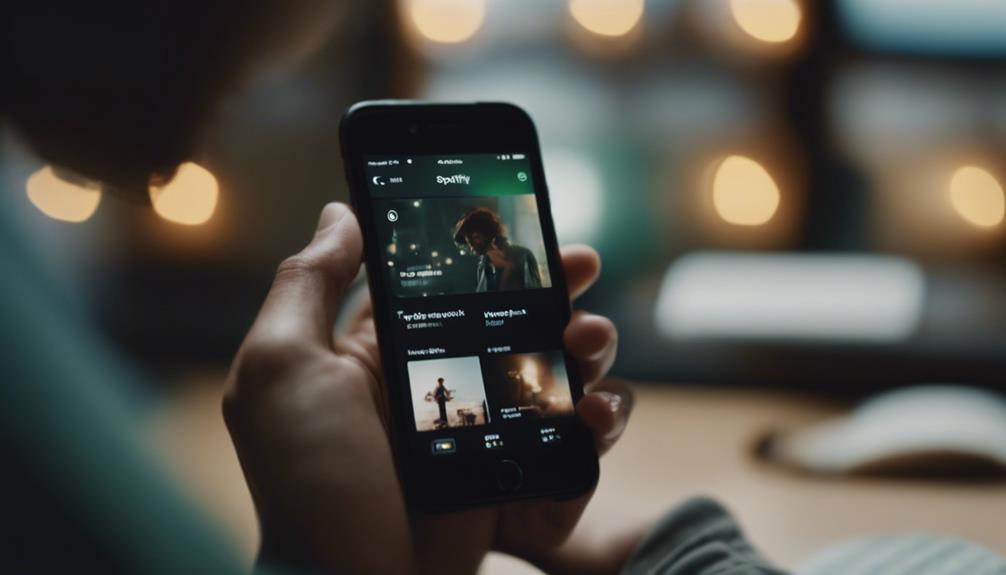If you're excited to uncover tunes like a musical Sherlock, we've got the scoop! To explore similar songs, delve into your favorite artists, genres, and vibes. Check out platforms like Spotify–they're like musical matchmakers, suggesting songs based on what you love. Want a personalized playlist? Let AI work its magic, crafting music mixes just for you. Your taste buds are in for a treat as you explore new jams that align perfectly with your style. Buckle up for the melodic journey ahead; we've only scratched the surface!
Key Takeaways
- Utilize Spotify Playlist Generator for tailored recommendations based on favorite songs and artists.
- Explore music preferences, genres, and moods to discover similar tracks.
- Use AI music recommendation engines to effortlessly find songs matching your vibe.
- Create personalized playlists for various occasions to find new music aligned with your taste.
- Leverage tools like Spotify to analyze songs and suggest new artists and tracks.
Utilizing AI Music Recommendation Engines
Utilizing AI music recommendation engines enhances personalized music discovery for users seeking to broaden their listening experience. Picture this: you're in the mood for some fresh tunes, but scrolling through endless playlists feels like searching for a needle in a haystack. That's where AI swoops in like a musical superhero, analyzing your music preferences faster than you can say 'shuffle.' These engines are like your own personal music gurus, guiding you through the vast sea of songs to find hidden gems that match your vibe.
With AI technology at the helm, song matching becomes a breeze. Whether you're into catchy beats or soulful melodies, these recommendation engines work their magic by categorizing music based on intricate details. They dive deep into the world of music categorization, making it easier for you to explore new sounds that resonate with your soul. So, next time you're craving a musical adventure, let AI be your trusty sidekick in uncovering those hidden depths of songs you never knew existed.
Exploring Music Preferences and Similarities

Exploring music preferences and similarities involves delving into favorite artists, genres, and moods to uncover connections and discover new tracks that resonate with our musical taste. When we seek out similar songs, we look beyond just the surface level – it's about discovering those hidden gems that strike a chord with our souls. Whether we're curating a playlist for a road trip or just chilling at home, the quest to find that perfect song is always on our minds.
One way to navigate this musical maze is by using tools like Spotify, which can be our trusty sidekick in this journey of musical exploration. By analyzing the songs we love, Spotify suggests new artists and tracks that align with our unique tastes. It's like having a personal music guru at our fingertips, ready to reveal the next hit that will have us hitting the replay button non-stop.
Personalized Music Recommendations for Users
Diving into personalized music recommendations reveals a world of tailored tracks that resonate with individual listening habits and preferences. By leveraging algorithms that analyze your favorite tunes, platforms like Spotify playlist generator craft a musical journey just for you. Imagine a virtual DJ that knows you better than you know yourself, curating playlists filled with similar songs that align perfectly with your taste. This personalized music recommendation process helps users find new music based on what they already love. It's like having a musical sidekick who always has your back when you need a fresh groove. Whether you're into the latest releases or looking to explore different genres, these recommendations open doors to a universe of musical wonders tailored just for you. Say goodbye to endless scrolling and hello to a music discovery experience that feels like it was handcrafted to suit your unique vibe.
| Benefits | Description |
|---|---|
| Tailored Recommendations | Get personalized song suggestions based on your listening habits. |
| Discover New Music | Unearth new artists, genres, and tracks that align with your preferences. |
| Customized Listening Experience | Enjoy a musical journey that resonates with your unique taste. |
Discovering New Music Based on Tastes

Discovering new music based on our tastes involves utilizing the Spotify Playlist Generator to uncover personalized recommendations tailored to our favorite songs, artists, genres, moods, or playlists. It's like having a musical genie granting your every wish for the perfect playlist! This nifty tool makes it super easy to find similar songs that match your vibe. Whether you're into rock, pop, or jazz, this personalized recommendation feature is like having a musical compass guiding you to your favorite artists and genres.
For music lovers who are always on the hunt for fresh tunes, the Spotify Playlist Generator is a game-changer. It's like having a virtual DJ that knows your taste better than you do! Just input your favorite artists or genres, and voilà, a world of song recommendations tailored just for you. Say goodbye to endless scrolling and hello to a customized music playlist that speaks to your soul. Trust us, once you start using this tool, you'll wonder how you ever survived without it!
Diverse Range of Recommended Songs
Imagine this: our journey into the world of music discovery continues as we delve into the diverse range of recommended songs on Spotify. When immersing ourselves in the realm of free online music, Spotify's personalized recommendations present a treasure trove of similar tracks that cater to our eclectic music tastes.
Envision this: you're vibing to your favorite tunes, and suddenly Spotify's playlist maker swoops in with a mix of popular hits, underground gems, and fresh releases perfectly tailored to your music preferences. It's like having a musical genie that knows exactly what you want to hear next!
Frequently Asked Questions
How Do I Find Similar Songs From One Song?
We can find similar songs from one song by tapping into music platforms like Spotify's 'Start Radio' or music recommendation websites like Spotalike.com. These tools analyze our favorite tunes and dish out sweet suggestions that match our vibe.
It's like having a music guru at our fingertips, always ready to drop some fresh beats that we never knew we needed.
How Do You Find Songs That You Like?
We guarantee songs we like by exploring diverse music platforms and features like Spotify's Start Radio or Apple Music's For You section. By interacting with features such as Love or Suggest Less Like This, we shape recommendations to our taste.
Embracing AI-powered engines like Maroofy or Tunes for Tales helps us discover tunes aligned with our preferences. Streamlining our library with tools like Cisdem Duplicate Finder makes sure we focus on unearthing new jams that resonate with us.
Is There an AI That Finds Similar Songs?
Oh, you bet there are AIs out there rocking the music game by finding similar songs!
These smart tools like Maroofy and Tunes for Tales are like your personal music detectives, sniffing out tunes that match your vibe.
They analyze and categorize music like pros to dish out those sweet recommendations.
What Is the App That Finds Similar Songs?
We've got the inside scoop on the app that finds those musical soulmates for you. Spotalike is the name, and it's like having a musical matchmaker at your fingertips. Just plug in your favorite tune, and voila! You'll get a list of similar songs to groove to.
It's like having your own personal DJ who knows your vibe better than you do. Trust us, once you try it, you'll wonder how you ever lived without it.
Conclusion
So there you have it, folks! With AI music recommendation engines and personalized suggestions, you can easily find similar songs to expand your music library.
Did you know that on average, people listen to over 64 hours of music per week? That's like having a personal concert every day!
Keep exploring new tunes and let the music take you on a journey of discovery. Happy listening!









